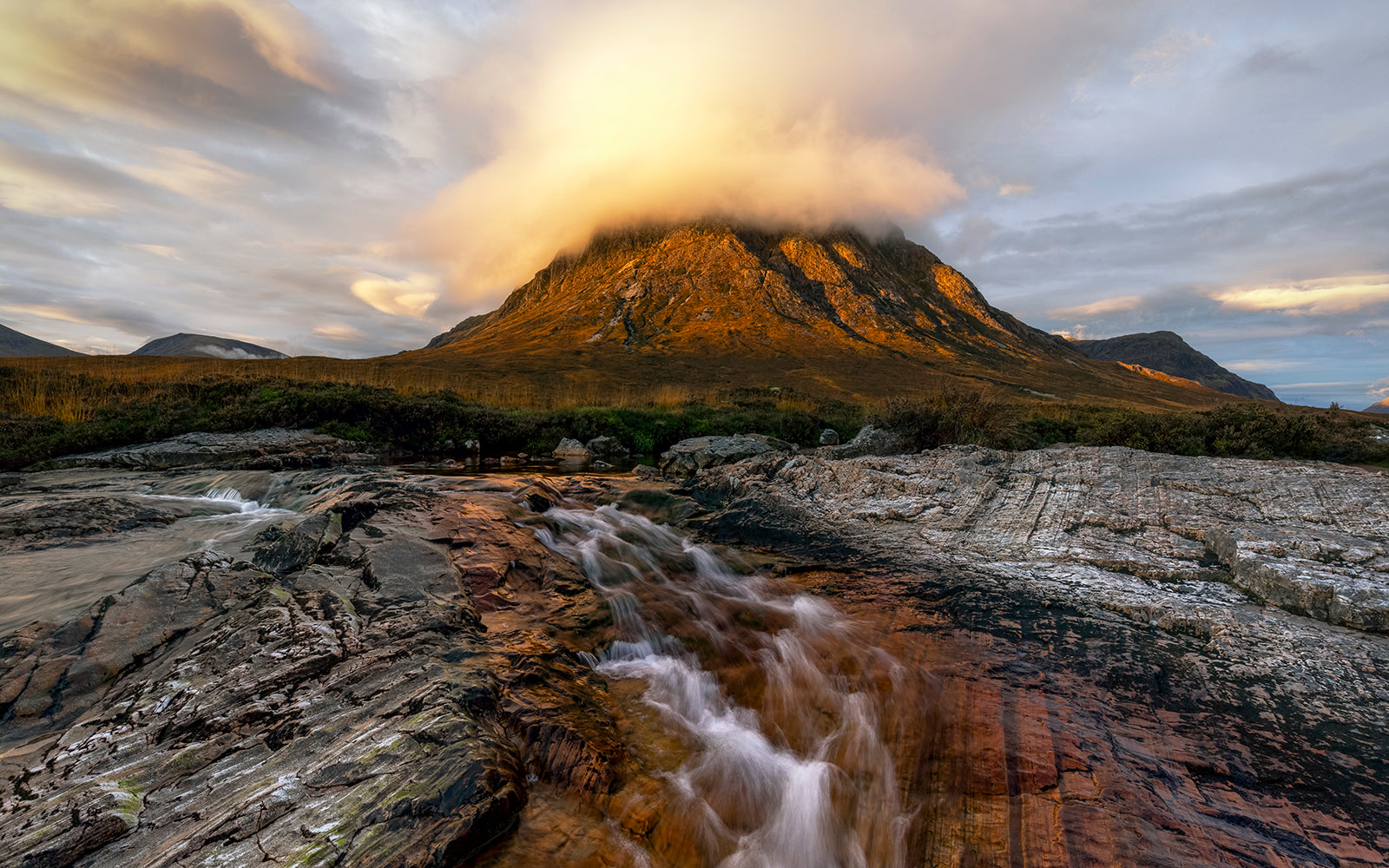Novice
Filter Basics

Filters are used to control and modify light entering your camera. Filters are either screwed directly onto the lens, or held in a holder system like the one shown here. Formatt-Hitech manufacture both holder systems and filters as a complete system.
Filters are typically used to control the brightness of areas in the image (for example, a bright sky) or adjust the exposure time creating a variety of in-camera effects.
This page provides a basic overview of filters for the filter novice, plus links to additional pages detailing filters used in specific applications, such as landscape photography.
ND Basics

© Kieran Hayes
Neutral density filters are colorless filters that remove light evenly across all spectrums. Neutral density filters are used to lengthen exposure time, or allow the shooter to use a larger aperture. Common uses are:
- Creating shallow depth of field during daytime
- Making water appear misty and ethereal
- Removing people from busy areas
- Transforming clouds and skies
- Adjust exposure on cinema cameras because shutter duration is fixed
Density

ND filters are available between 1-10 stops of density, plus 13 & 16 stops for long exposure. The density of the ND is written either in the number of stops, or using the traditional density scale.
- 0.3 = 1 stop
- 0.6 = 2 stops
- 0.9 = 3 stops
- etc
Be careful to note the difference. For example, a 6 stop filter could be labeled “1.8”, but a two stop filter could be labeled “0.6.”
Popular Uses

© Paul Millar
3-4 stop ND filters allow street photographers to shoot their fast lenses “wide-open” even during the middle of the day.
4-6 stop ND filters create a moderate lengthening of exposure time to create a misty effect in moving water. Usually around 1 second.
6-10 stop ND filters create 2-30 second exposures that are perfect for waterfalls, streams, and seashores.
13 stop ND filters are used to create ethereal effects in water and clouds, with exposure times around 2 minutes in duration, especially in areas where clouds are moving quickly (such as coastal cities).
16 stop ND filters are used to create the long exposure effects - such as streaky clouds and flat water - that have been popularized by photographers such as Joel Tjintjelaar. 16 stop filters allow the photographer to make 5-8 minute exposures, even during mid-day lighting conditions.
Polariser

A polariser filter allows light from certain angles to pass through the filter while simultaneously rejecting light from other angles. The resulting effect that polarisers have on photography is almost magical. Bright glaring reflections on water magically disappear. Foliage becomes deep and rich. Haze evaporates from the sky leaving clouds silhouetted against dramatic blue skies
Popular Uses
- Darkening the sky to a richer blue colour
- Increasing contrast between sky and clouds
- Removing specular highlights from foliage
- Shooting through windows
- Removing reflections from the surface of water
Graduated ND Filters

© Bernard Geraghty
ND filters are also available as grads. These filters provide the ND effect on a selected part of the scene. The most common use of a grad filter is to reduce the luminance of a bright sky to match the terrain below.

